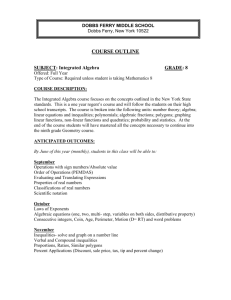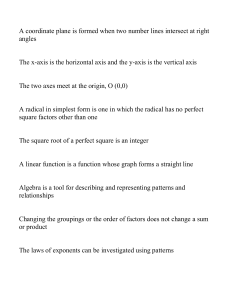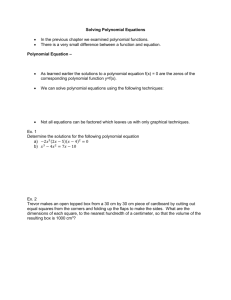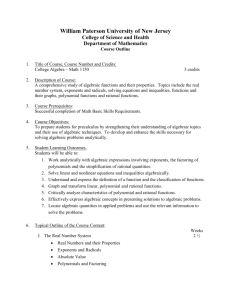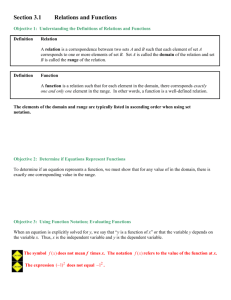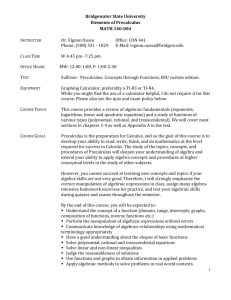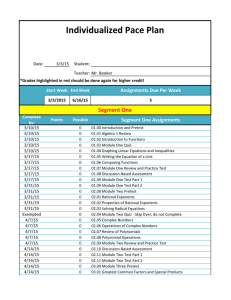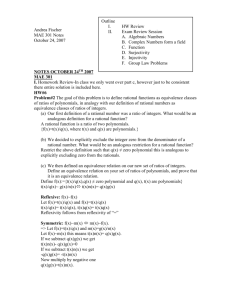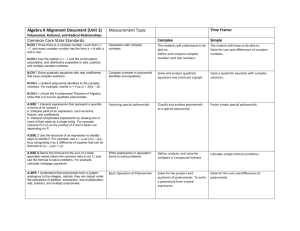Math 2 Pacing Guide
advertisement
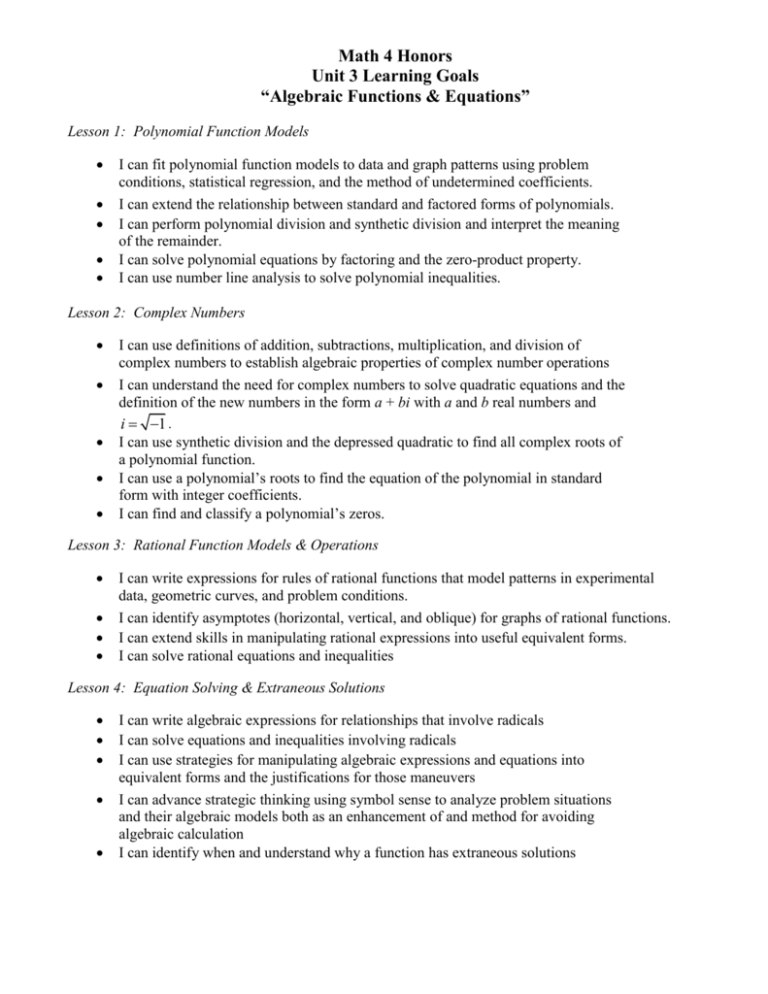
Math 4 Honors Unit 3 Learning Goals “Algebraic Functions & Equations” Lesson 1: Polynomial Function Models I can fit polynomial function models to data and graph patterns using problem conditions, statistical regression, and the method of undetermined coefficients. I can extend the relationship between standard and factored forms of polynomials. I can perform polynomial division and synthetic division and interpret the meaning of the remainder. I can solve polynomial equations by factoring and the zero-product property. I can use number line analysis to solve polynomial inequalities. Lesson 2: Complex Numbers I can use definitions of addition, subtractions, multiplication, and division of complex numbers to establish algebraic properties of complex number operations I can understand the need for complex numbers to solve quadratic equations and the definition of the new numbers in the form a + bi with a and b real numbers and i 1 . I can use synthetic division and the depressed quadratic to find all complex roots of a polynomial function. I can use a polynomial’s roots to find the equation of the polynomial in standard form with integer coefficients. I can find and classify a polynomial’s zeros. Lesson 3: Rational Function Models & Operations I can write expressions for rules of rational functions that model patterns in experimental data, geometric curves, and problem conditions. I can identify asymptotes (horizontal, vertical, and oblique) for graphs of rational functions. I can extend skills in manipulating rational expressions into useful equivalent forms. I can solve rational equations and inequalities Lesson 4: Equation Solving & Extraneous Solutions I can write algebraic expressions for relationships that involve radicals I can solve equations and inequalities involving radicals I can use strategies for manipulating algebraic expressions and equations into equivalent forms and the justifications for those maneuvers I can advance strategic thinking using symbol sense to analyze problem situations and their algebraic models both as an enhancement of and method for avoiding algebraic calculation I can identify when and understand why a function has extraneous solutions
